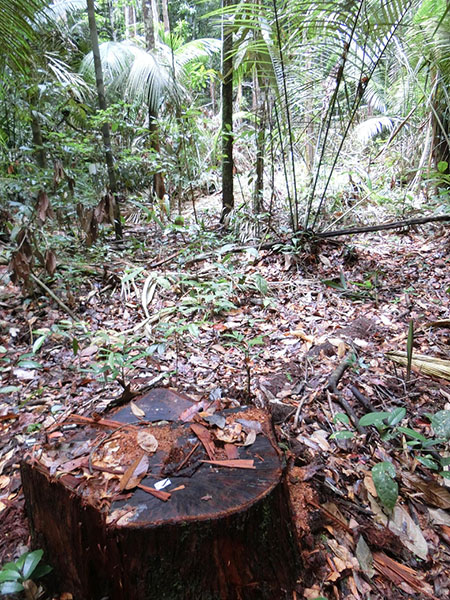Home > Research > Research Results > Research Results 2018 > We clarified the process of biomass recovery after selective logging in the central Amazon
Main content starts here.
We clarified the process of biomass recovery after selective logging in the central Amazon
| Article title |
Recovery of above-ground tree biomass after moderate selective logging in a central Amazonian forest |
|---|---|
| Author (affiliation) |
Tatsuya Otani (a), Adriano J. N. Lima (b), Rempei Suwa (c), Marcio R. M. Amaral (b), Shinta Ohashi (d), Alberto C. M. Pinto (e), Joaquim dos Santos (b), Takuya Kajimoto (d), Niro Higuchi (b), Moriyoshi Ishizuka (d) (a) Shikoku Research Center, FFPRI, Kochi, Japan. (c) Kansai Research Center, FFPRI, Kyoto, Japan. (d) FFPRI, Tsukuba, Ibaraki, Japan. (e) Federal University of Amazonas, Manaus, Amazonas, Brazil. |
| Publication Journal |
iForest, 11:352-359, April 2018, DOI: 10.3832/ifor2534-011( External link ) |
| Content introduction |
Japan also imports Amazonian timber products, such as wood, from the Macaranduba and Tabebuia trees, which are cut from natural forests (selective cutting) before processing. On the other hand, tropical forests, also known as the lungs of the Earth, are deteriorated by selective cutting, which results in decreases in the amount of carbon dioxide that they can retain. This, in turn, contributes to global climate change. To assess the balance between the utilization of tropical forest wood and suppression of climate change, it is necessary to know exactly how forests that underwent selective cutting have recovered. Therefore, we investigated the change in biomass* of trees growing in a forest that was designated for selective cutting by a timber company in the central part of the Amazon, an area that has seen few such studies in the past. Investigation plots were set up at several points of the different selected years, and the numbers and diameters of trees were repeatedly recorded thrice, in 2006, 2010, and 2012-13. By studying the relationship between the elapsed years after logging and the overall biomass and comparing with adjacent protected forests, we estimated that biomass recovers within 14 years after logging. However, regarding the change in biomass by tree size, there remains a difference between the selectively-cut forest and the protected forest, and in this sense, it was considered not to have completely recovered. These results show that with careful and gentle selection, the total amount of biomass can be recovered in a relatively short time because of the growth of the remaining trees, but a complete structural recovery of the forest requires a longer period.
*Biomass: The amount of living organisms per area. In this study, biomass refers to the dry mass of trees per hectare, approximately half of which comprises carbon mass.
Photo: A stub left in the forest in the central Amazon and the forest floor that appears brighter because of selective logging. |
Copyright © Forest Research and Management Organization. All rights reserved.

